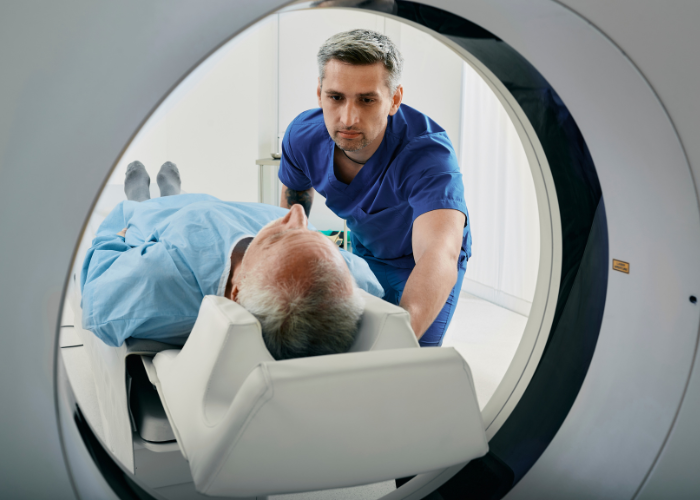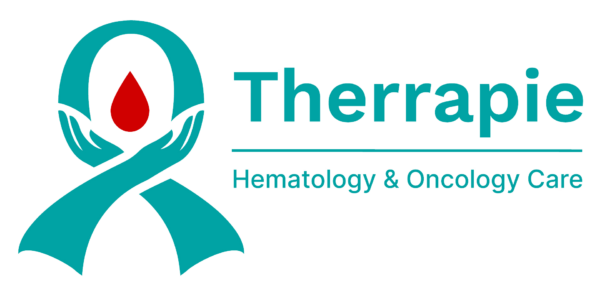CT Biopsy

CT-guided biopsy is a diagnostic technique to accurately target and take samples of questionable tissues to identify bodily abnormalities. It is frequently used to look into anomalies found on CT scans, offering important details for diagnosing many illnesses, including cancer. To guarantee reliable findings, our skilled staff at Therrapie Haematology and Oncology Care provide cutting-edge technology with the utmost care. Please make an appointment right now to take advantage of our CT biopsy procedures for an accurate diagnosis.
Understanding CT Biopsy
A radiologist will use a needle to take a little tissue sample in this process. This is carried out to diagnose and schedule future care. The safest approach to insert the needle into the lesion is with the use of a CT scan.
This diagnostic method is frequently used when an MRI or ultrasound may not be able to give enough information. CT biopsy is especially used to examine abdominal masses, deep-seated lesions, and lung nodules. This can be used as a less intrusive substitute for a traditional surgical biopsy. With CT guidance, one may often avoid general anesthesia, have a quicker recovery period, and experience fewer problems.
Procedure
- It will be necessary for you to lie back on the provided scanning table.
- An IV needle will be inserted by a nurse.
- We’ll provide a local anesthetic to you. This will only cause local anesthesia in the vicinity of the surgical site. You’ll stay wide awake.
- Your current table will move into the scanner. You may slip inside the machine more than once throughout this procedure, which often involves many scans.
- You can look out because the scanner is open from the front and back. Throughout your evaluation, the technician will constantly be available to see and hear you.
- It will be necessary for you to remain still and occasionally hold your breath.
- A technician inserts a fine biopsy needle through the skin and into the targeted area with real-time CT images.
- A little tissue sample is taken for further analysis once the needle has been positioned precisely.
- The actual biopsy typically takes fifteen to thirty minutes.
Benefits of CT Biopsy
- The use of significant surgical procedures is decreased using the minimally invasive approach known as CT-guided biopsy.
- The exact targeting of questionable tissues is made possible by the real-time imaging that CT provides, guaranteeing the exact selection of the biopsy location.
- CT-guided surgical biopsies are less likely to result in problems, infections, or scarring than typical surgical biopsies.
- When compared to more invasive surgical options, patients getting CT-guided biopsies usually recover more quickly.
- Applying CT-guided biopsy to other parts of the body makes it a flexible diagnostic tool that may be used to look at problems in the abdomen, lungs, and other parts of the body.
- Real-time guiding improves tissue sample accuracy, which leads to more trustworthy diagnostic outcomes.
- By avoiding the requirement for surgical investigation, CT-guided biopsy frequently reduces patient discomfort by confirming the diagnosis without requiring surgery for exploration.
With so many benefits for patients, CT-guided biopsy at Therrapie Haematology and Oncology Care is the method of choice for accurate and least invasive tissue sample collection.
CT-Guided Biopsy at Therrapie Haematology and Oncology Care
A useful technique in contemporary medicine, CT-guided biopsy enables accurate and less invasive tissue collection. Its importance in offering precise and timely medical insights is further demonstrated by its function in the identification and treatment of cancer planning.
Modern CT-guided biopsies are available at Therrapie Haematology and Oncology Care, guaranteeing accuracy and patient comfort. Our skilled staff puts your health first, delivering precise findings for a proactive approach to treatment. Make an appointment for your consultation at Therrapie Haematology and Oncology Care to receive compassionate treatment along with cutting-edge diagnostics. This is where your journey to a precise diagnosis begins.
